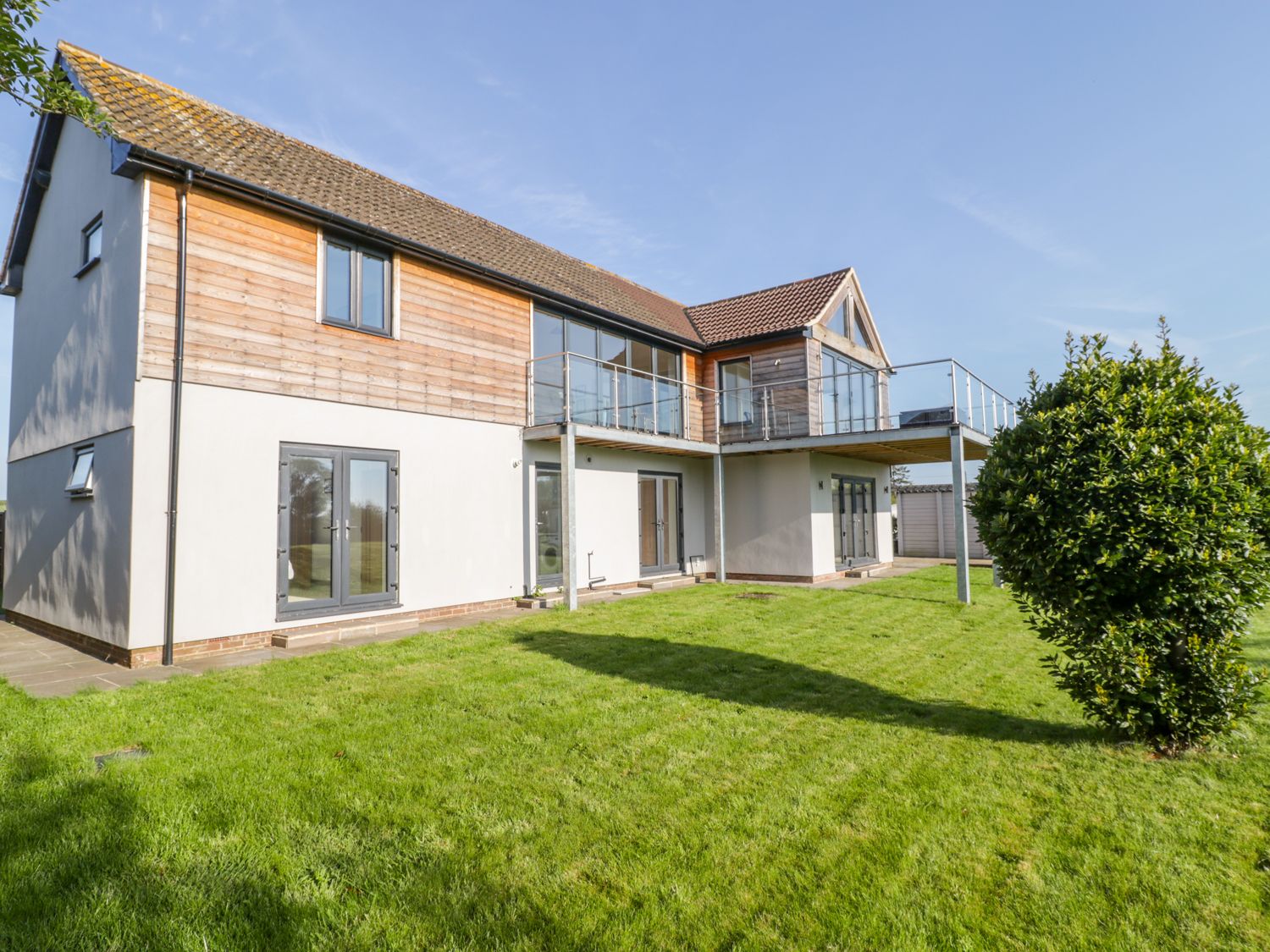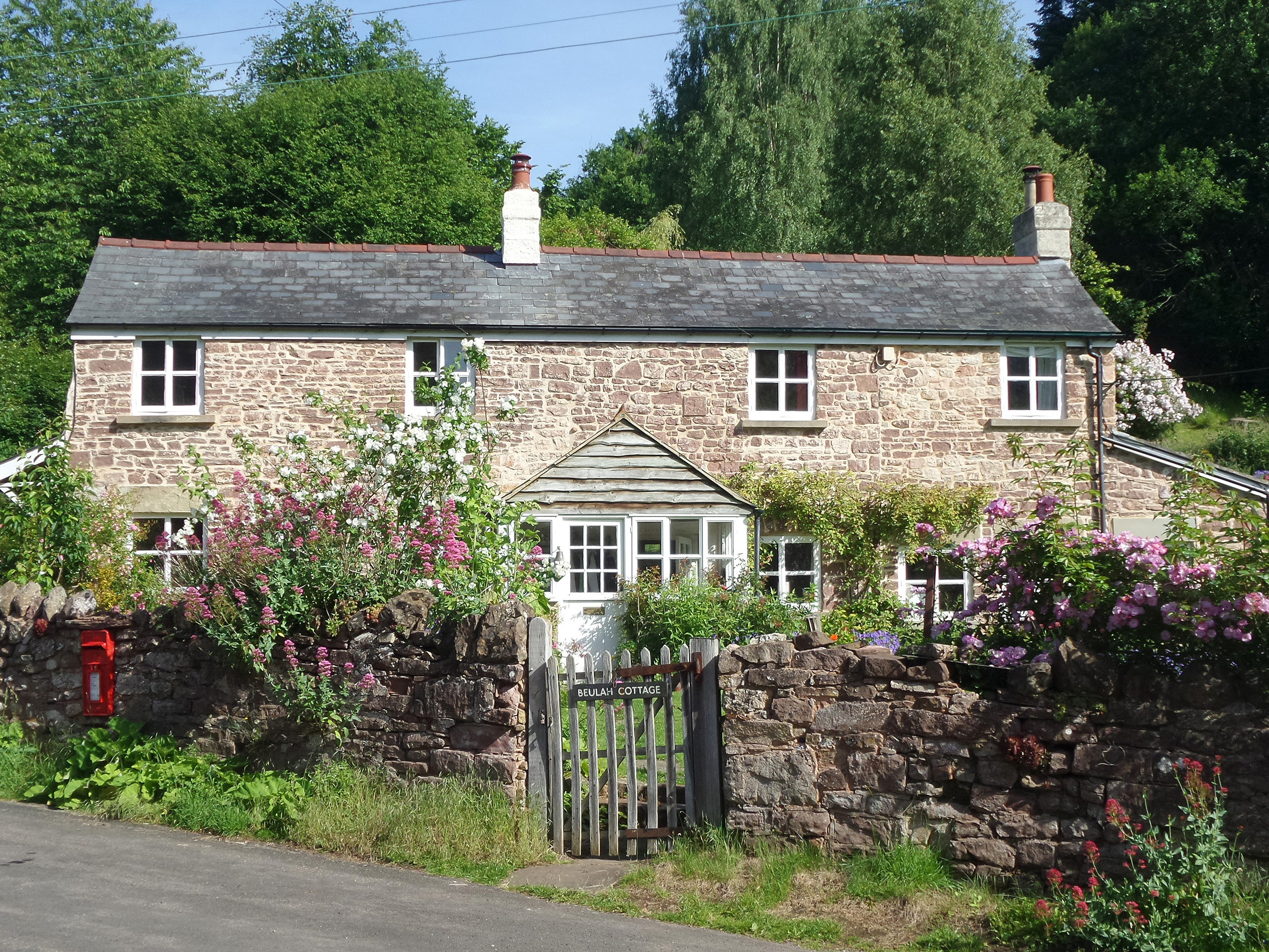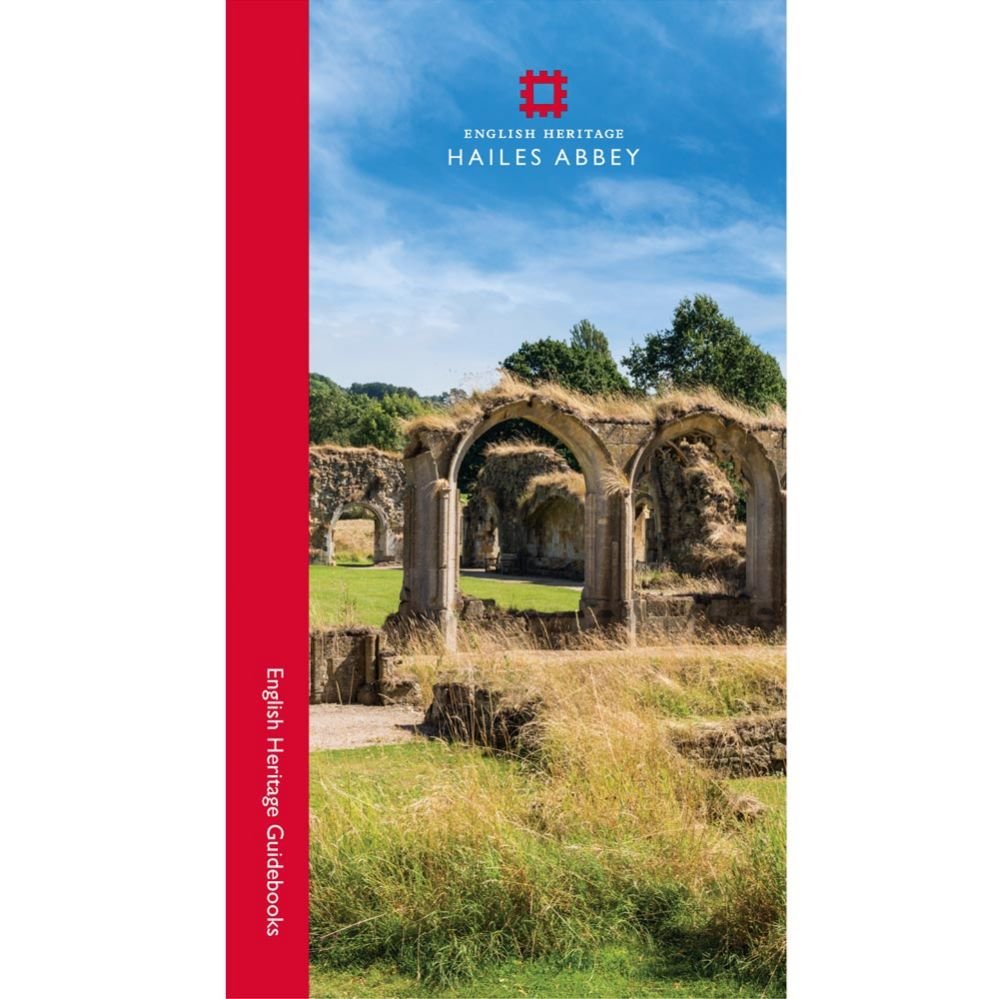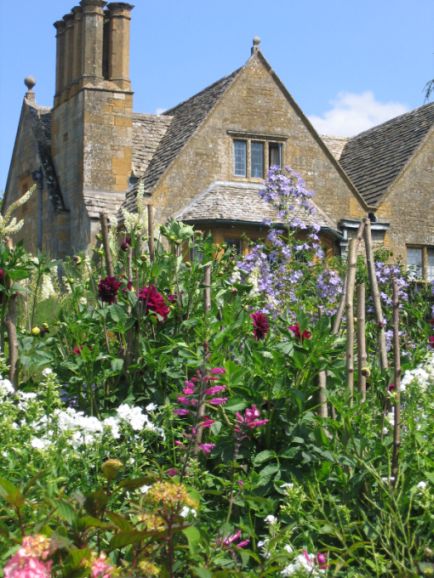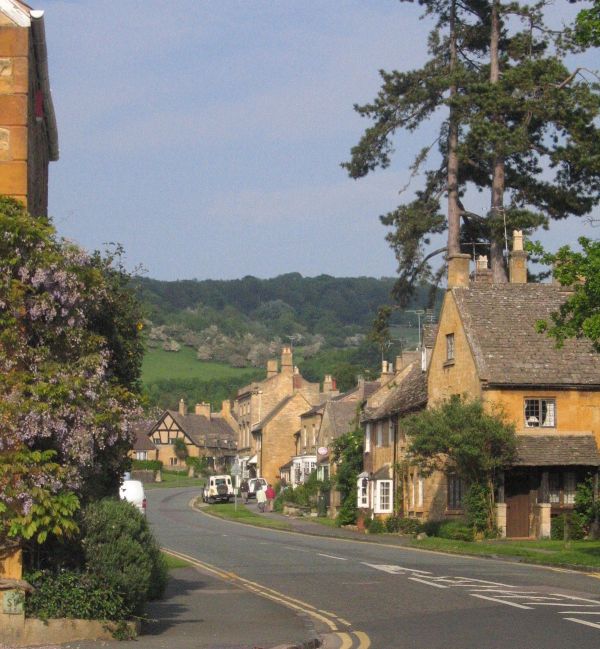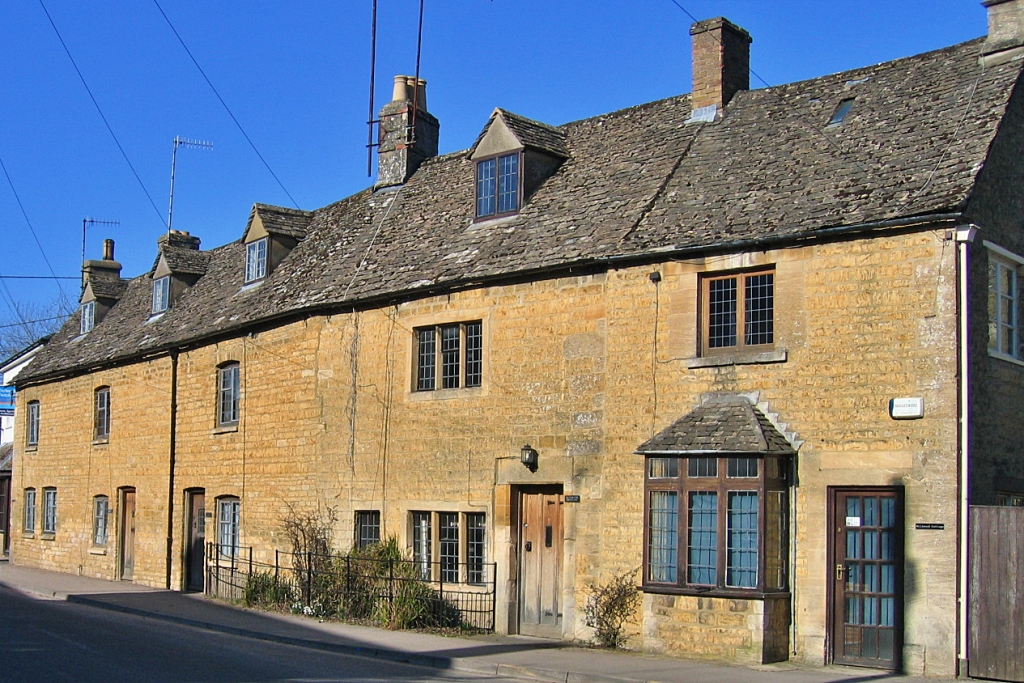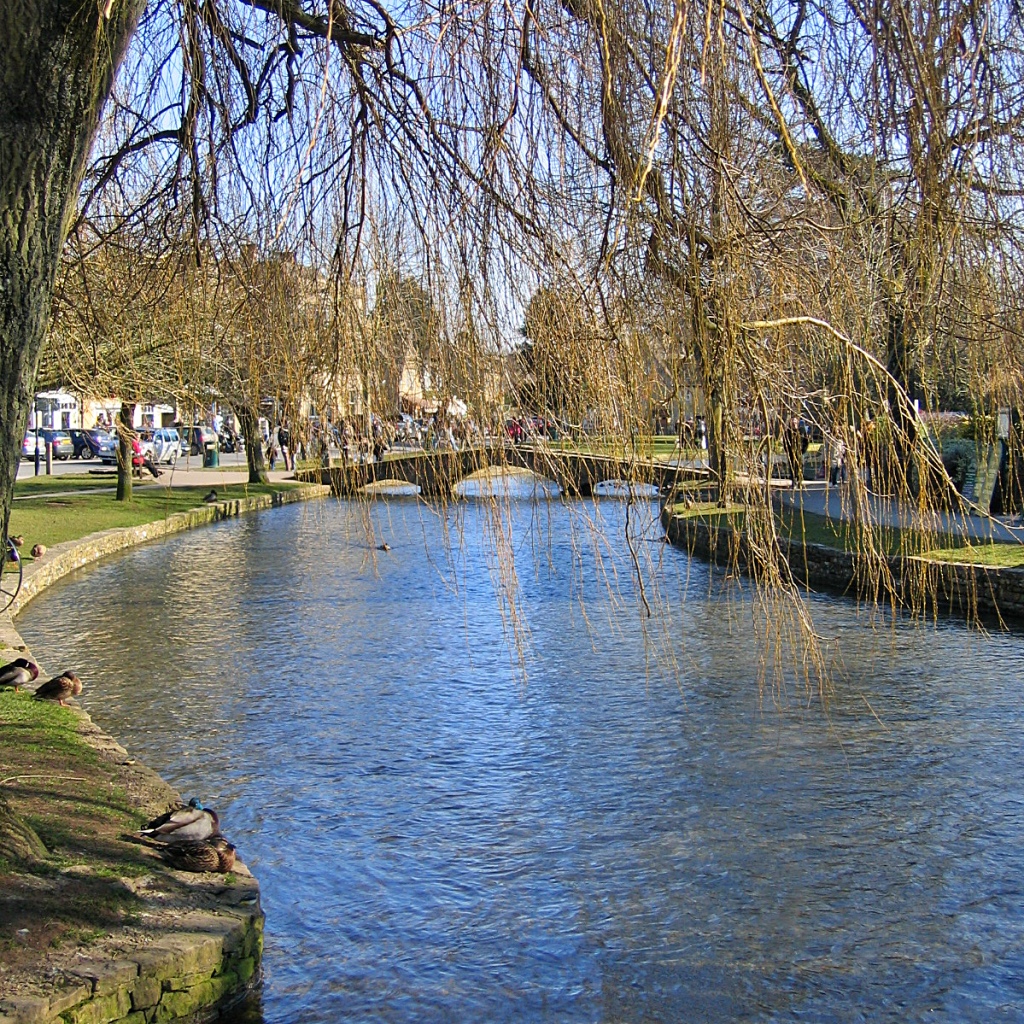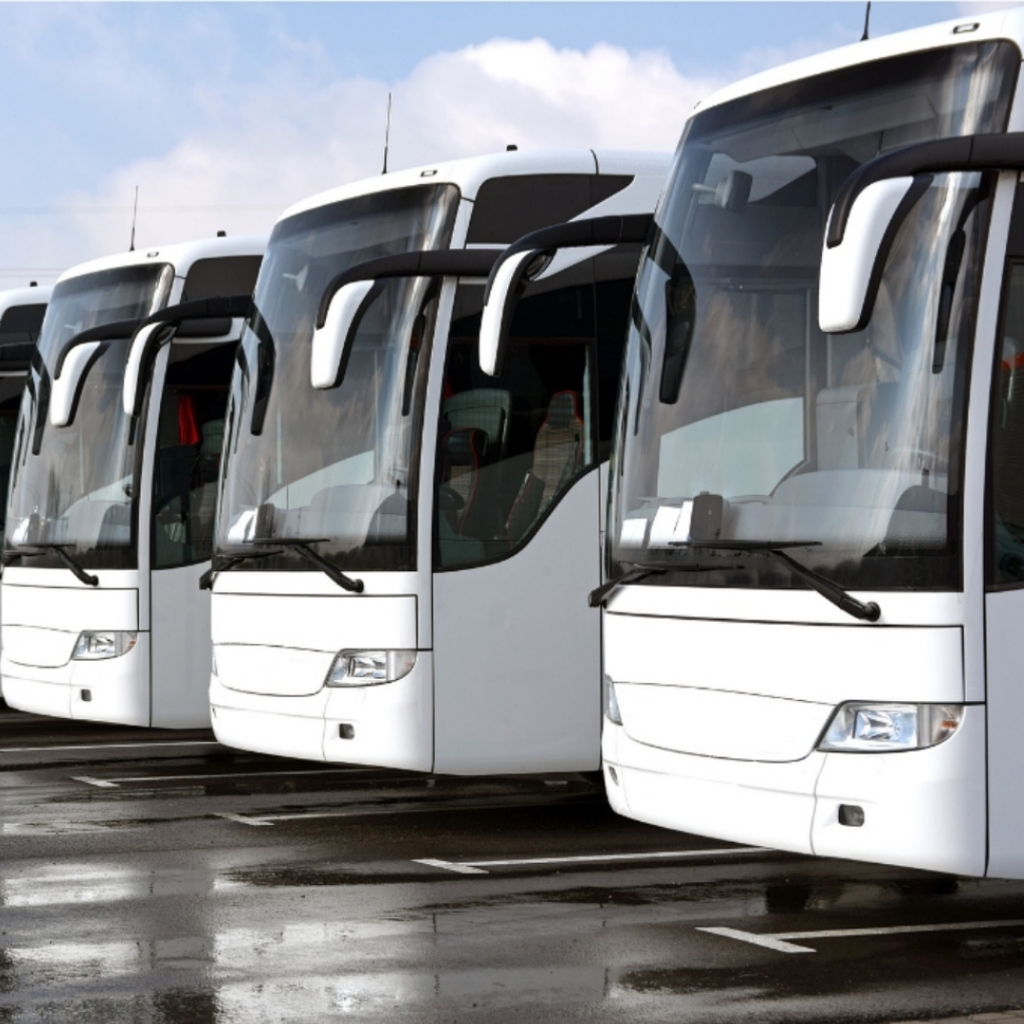Hailes Abbey
Hidden away in a beautiful, secluded part of the Cotswolds are the ruins of the Cistercian Hailes Abbey. Being surrounded by farmland, all you hear are the sounds of the countryside and, now and again, the chuff-chuff, and possible whistle, of one of the steam trains passing on the Gloucestershire and Warwickshire Railway a few hundred metres away. It’s an idyllic location and we found it extremely peaceful.
Hailes Abbey is a magical place. We visited on a sunny day in May and the first thing that struck us was the peace of the site. It felt as if we'd landed in another world, even though the town of Winchcombe was only two miles away. It was a wonderful place to sit and have a picnic, and we found that there were plenty of picnic tables scattered around the site to choose from. Just remember to bring those sandwiches and drinks!
An excellent audio guide brought the abbey back to life and increased our understanding of this historic site. It explained the history and described monastic life and building details. There were even some entertaining stories about the monks!
There was also a small museum which displayed a good selection of artifacts that had been found on the site.
For more information on opening times and events please see the English Heritage website here.
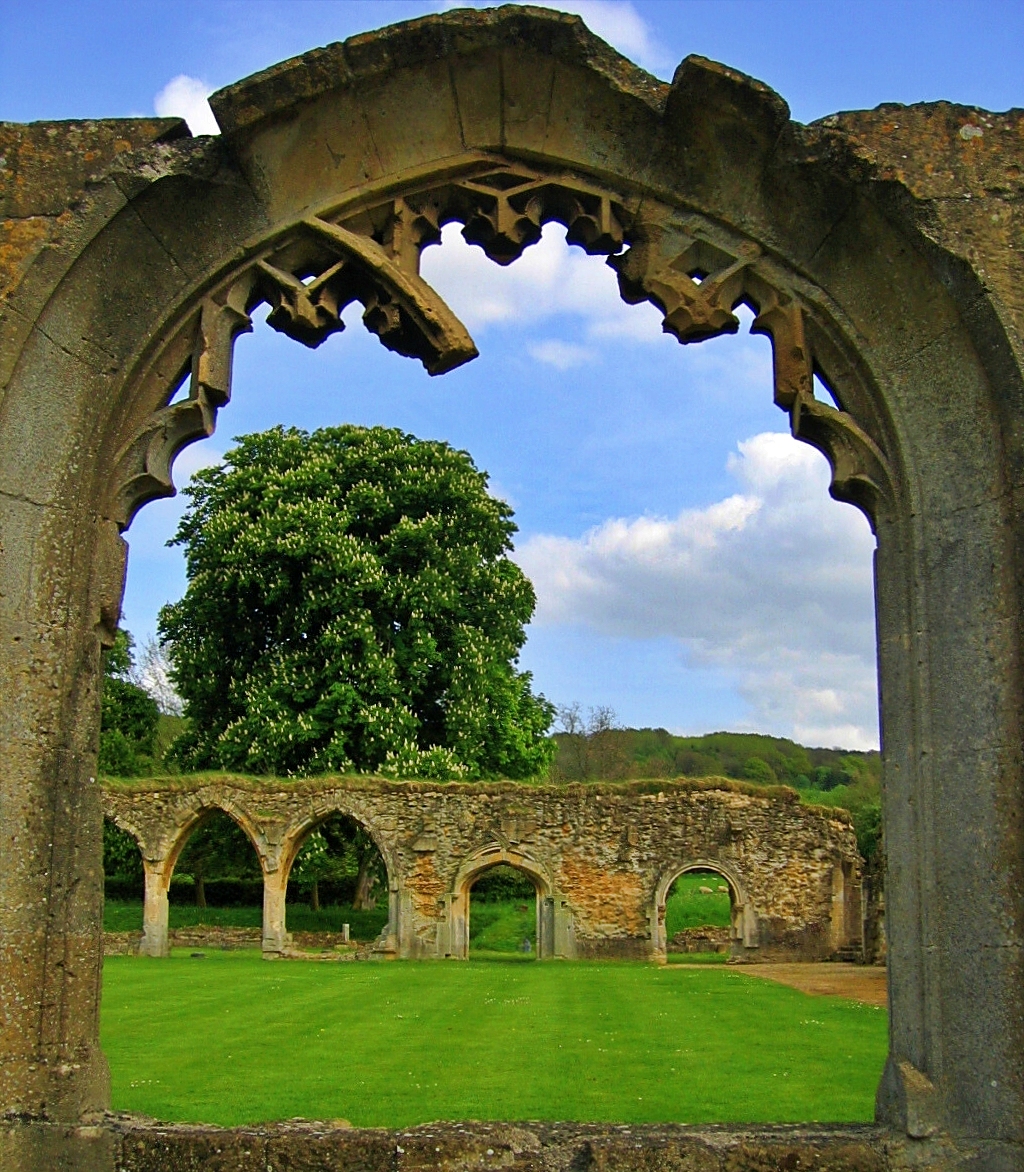 Looking East Across the Cloister © essentially-england.com
Looking East Across the Cloister © essentially-england.comLittle of the historic Hailes Abbey remains after King Henry VIII’s men partially destroyed it during the Reformation in the 16th century.
Much of the building stone has been robbed or used to
construct other buildings and stone walls in the area. What's left are
low-lying walls and foundations that give an idea of the size and layout of the abbey -
as can be seen on the Google Maps scene below. You can also view a plan of the abbey layout on the English Heritage website here.
Google Maps Aerial View of Hailes Abbey
History
Of Hailes Abbey
Hailes Abbey was founded by Richard, Earl of Cornwall, the second son of King John, after he survived a storm at sea in 1242 and vowed to build a religious house in appreciation of his life. Three years later, King Henry III, Richard’s elder brother, gave him the manor of Hailes so that he could fulfil his promise. Richard lavished around seven thousand pounds on the new abbey and the church was consecrated with a great royal ceremony in November 1251.
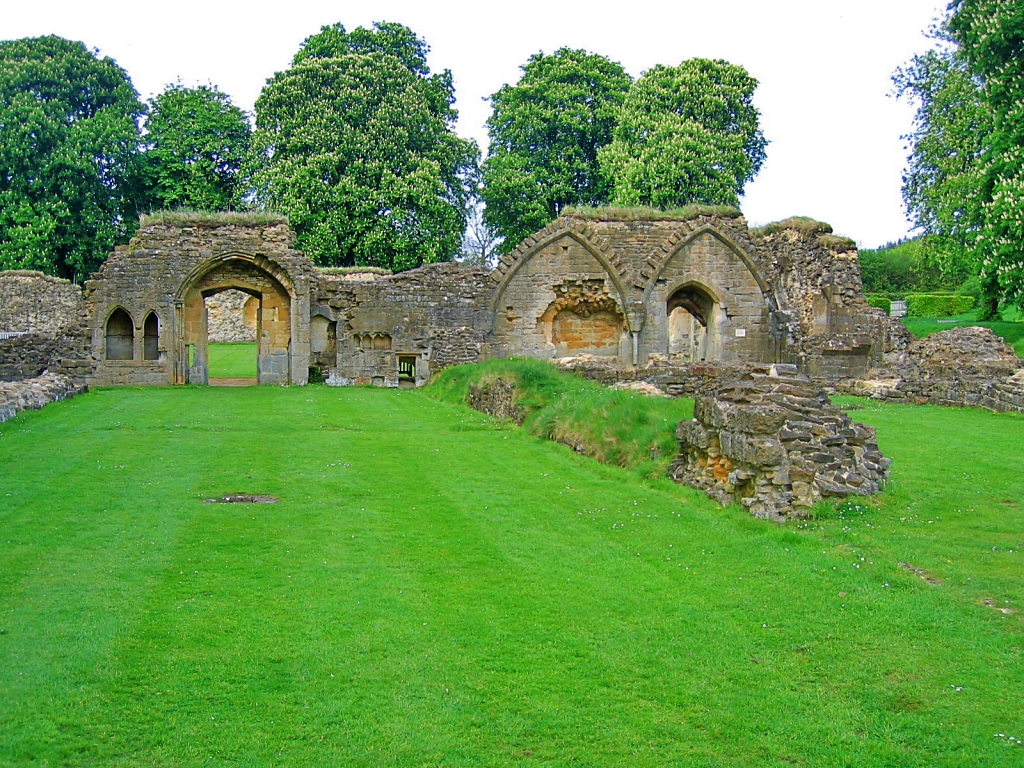 On the Left is the Monks Dining Hall and Right is the Warming Room © essentially-england.com
On the Left is the Monks Dining Hall and Right is the Warming Room © essentially-england.comIn 1270, the abbey gained prominence after Richard’s son, Edmund, presented it with a phial of blood supposed to have been collected at the crucifixion of Christ. The east of the church was rebuilt over seven years and the “Holy Blood of Hailes” took centre stage on a platform behind the high altar. With this valuable holy relic on display, Hailes Abbey became one of the most important pilgrimage sites in medieval England, and even got a mention in Geoffrey Chaucer’s Canterbury Tales!
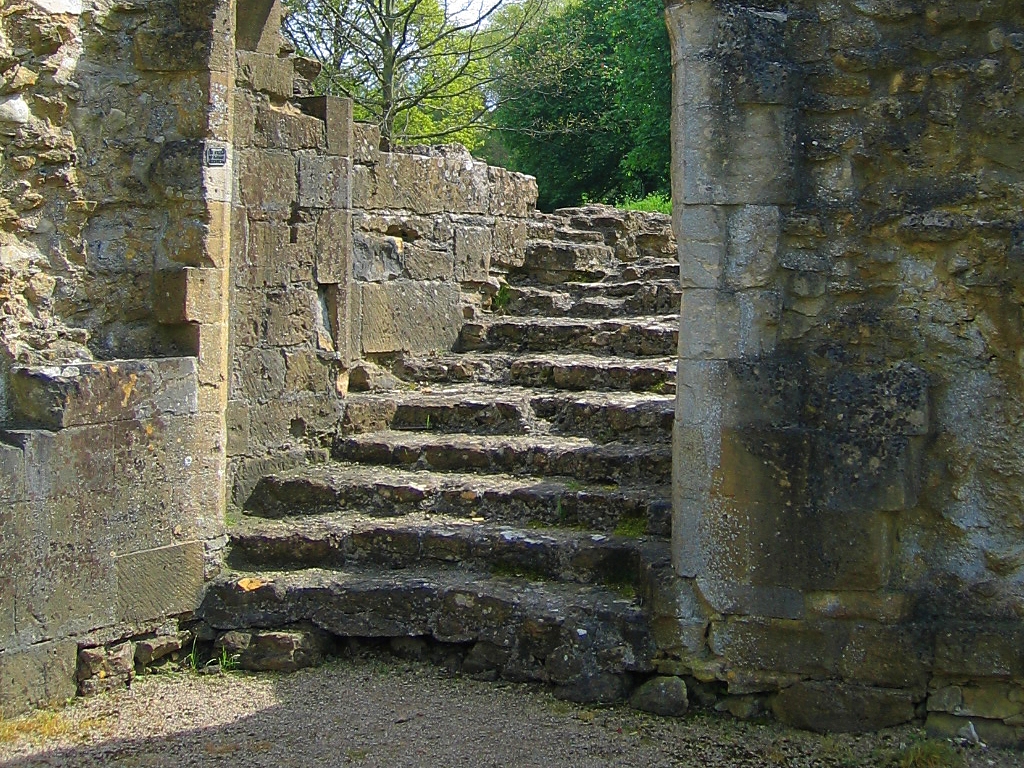 Day Stairs to the Monks Dormitary © essentially-england.com
Day Stairs to the Monks Dormitary © essentially-england.comAfter suffering a stroke in 1272, Richard of Cornwall died at Berkhamsted Castle in Hertfordshire. He was buried next to his second wife, Sanchia of Provence, in the abbey church at Hailes. Along with Richard and his second wife, three of his sons were also laid to rest at Hailes Abbey.
Hailes Abbey lost its royal patron in 1300 after Earl Edmund died without an heir. His entire estate, minus a dowry for his widow, went to the crown and the abbey quickly fell into financial trouble. Later that century, the Black Death swept through England, first between 1348 to 1349, and a second time between 1361 and 1362. The high death rate obliterated the workers on abbey lands and reduced its income dramatically. By the end of 1362 most of the monks and lay brothers had perished.
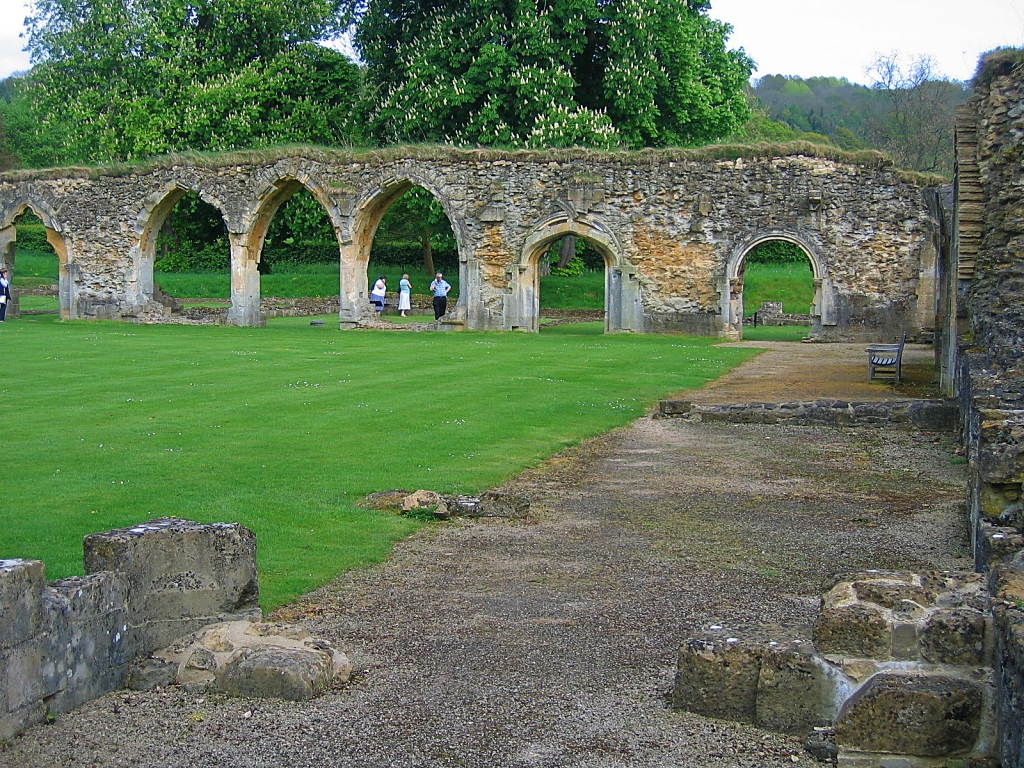 The Cloister's of Hailes Abbey © essentially-england.com
The Cloister's of Hailes Abbey © essentially-england.comBy 1412, Hailes Abbey had an annual income of around one hundred pounds and was in debt to the tune of over six hundred pounds. Its buildings were in poor condition and starting to fall apart. Successive Popes supported the abbey and insisted that money raised from pilgrims went to fund repairs.
In the latter half of the 15th century, renovations of the church, bell tower, and cloisters were completed, and the former lay brothers’ rooms converted into an impressive house for the abbot.
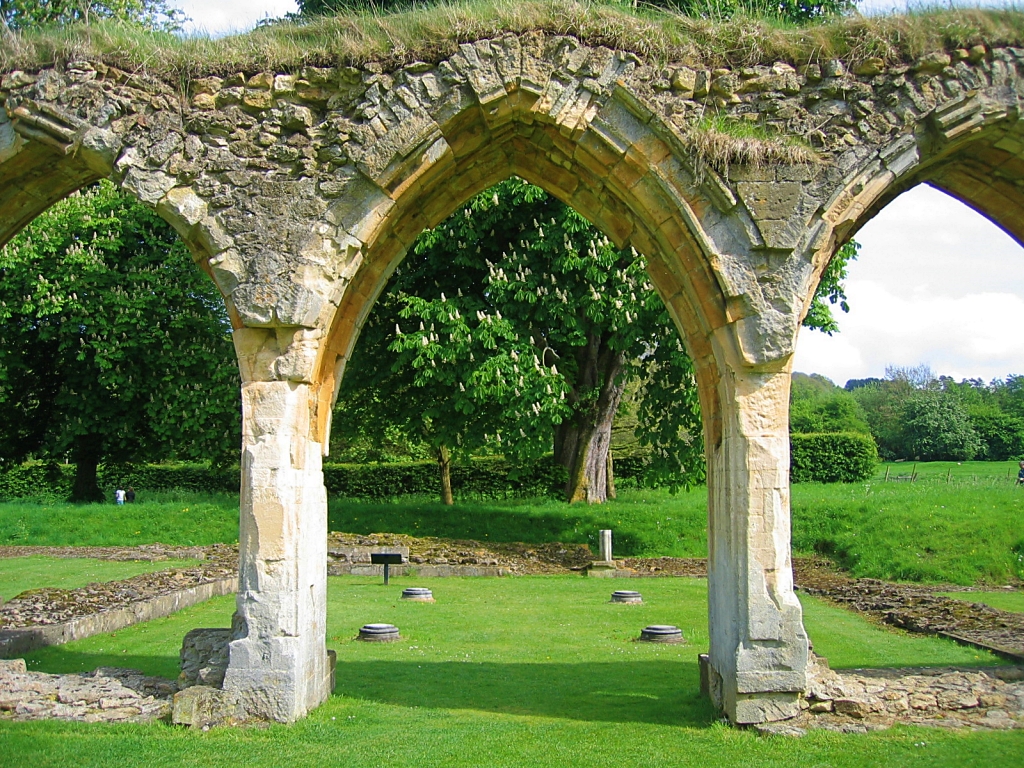 Entrance to the Chapter House © essentially-england.com
Entrance to the Chapter House © essentially-england.comThe investment in building repairs and improved administration led to a period of prosperity which, in turn, attracted wealthy patrons and high members of Tudor society joining the brotherhood. Little did they know what was to happen next…
Stephen Sagar was elected as the abbot of Hailes Abbey in 1527. He would be the last abbot of Hailes, and in December 1539 he and the twenty-one remaining monks finally gave the abbey to King Henry VIII’s men. They watched as the abbey was reduced to ruins and the “Holy Blood of Hailes” condemned as a fake!
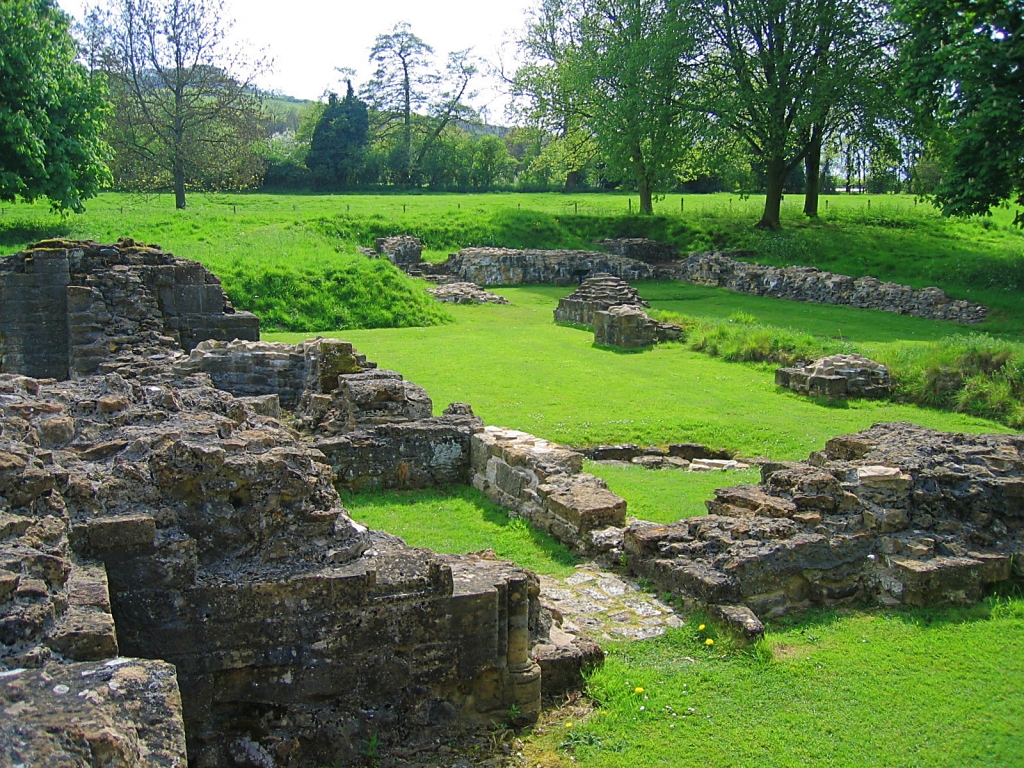 The Undercroft Beneath the Monks Dormitary © essentially-england.com
The Undercroft Beneath the Monks Dormitary © essentially-england.comThe abbey buildings were sold to Robert Acton, who demolished the abbey church and many of the monastic buildings apart from the abbot’s house, which was converted into a country estate. The abbey ruins were left as a romantic estate folly.
The Tracy family owned the Hailes estate until the early 18th century, when they left and moved to nearby Toddington. The house was converted again, this time into two farmhouses in about 1729. By 1794 the farmhouses were in ruin.
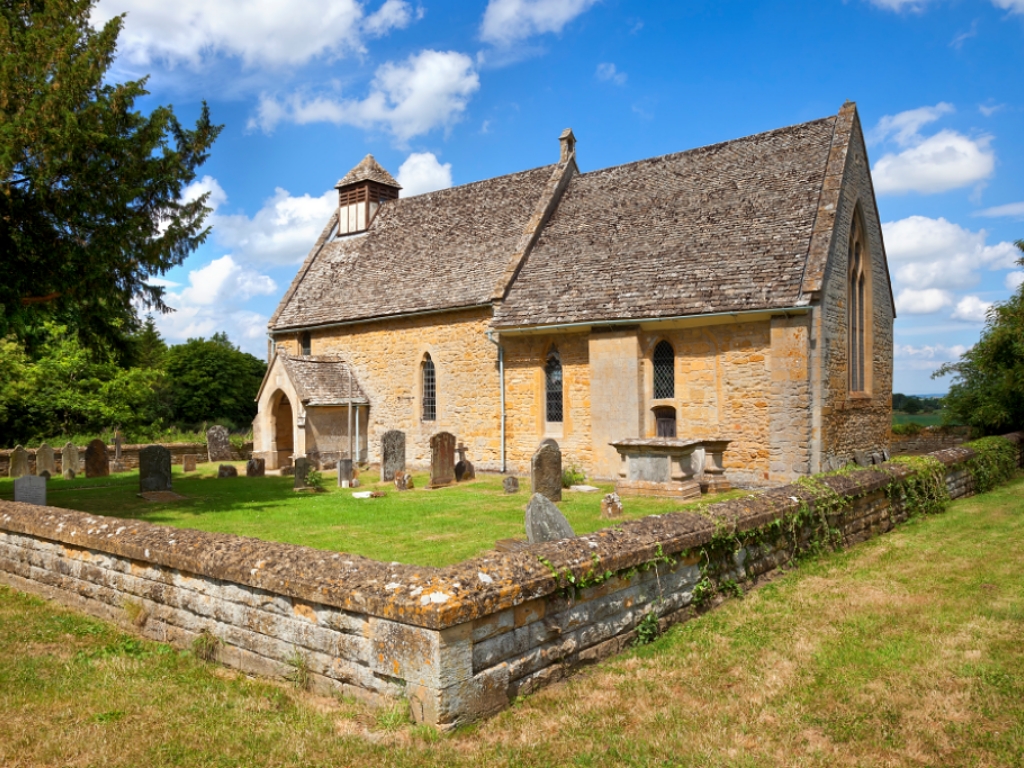 Hailes Church © andrewroland | depositphotos.com
Hailes Church © andrewroland | depositphotos.comAfter visiting Hailes Abbey ruins and museum, please visit Hailes Church, which is beside the carpark. This pretty Norman church is older than the abbey and has a wonderful unspoilt interior with a good collection of medieval wall paintings.
Visiting Gloucestershire?
Where You Could Stay
Gloucestershire is a great destination whether you want get-away-from-it-all peace, quiet walks and tiny villages, or high fashion shopping and a bit of excitement. Throw in Evensong at Gloucester Cathedral, a ruined abbey or two, racing at Cheltenham and some fantastic local food and you're all set for a weekend or a holiday that has something for everyone whether you're a couple in need of romance or a family in need of fun.
Gloucestershire has its fair share of beautiful apartments and holiday cottages, and here are a couple of ideas where you could stay:
To see other holiday cottages in Gloucestershire click here. Or check out holiday cottages in other parts of England by clicking here.
If you need to find a hotel, then try one of these search platforms...
What You Could See and Do
Explore the regency splendours of Cheltenham, take a walk along the Gloucester and Sharpness Canal or enjoy a long lazy lunch in the very pretty village of Frampton on Severn.
Ride on a steam train or watch some horse racing at Cheltenham's famous race course.
Visit The Slimbridge Wetland Centre. Explore its connection with Scott of the Antarctic and marvel at the variety of birds it attracts.
Spend a day meandering through the Cotswolds lanes. Stop off for ice cream at Lower Slaughter, feed the trout at Bibury, visit the Saxon Church at Duntisbourne Rouse or enjoy the wonderful garden at Hidcote Manor.
Return to the Gloucestershire page here.
